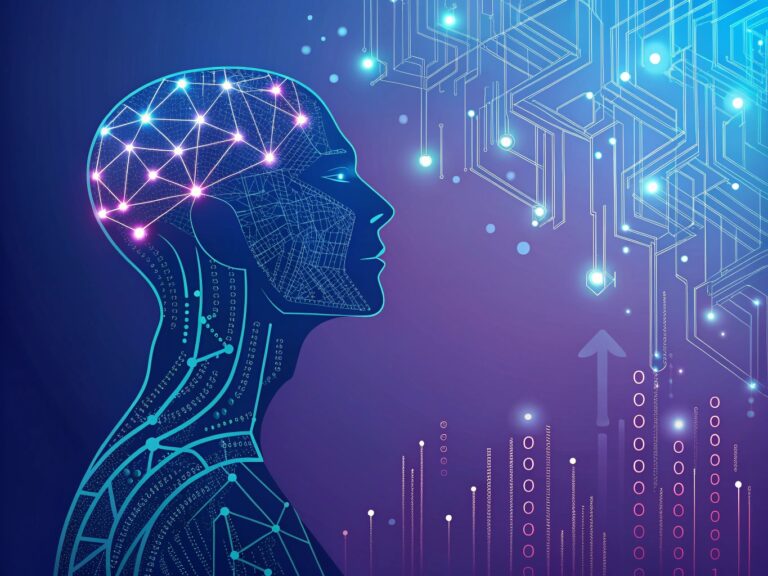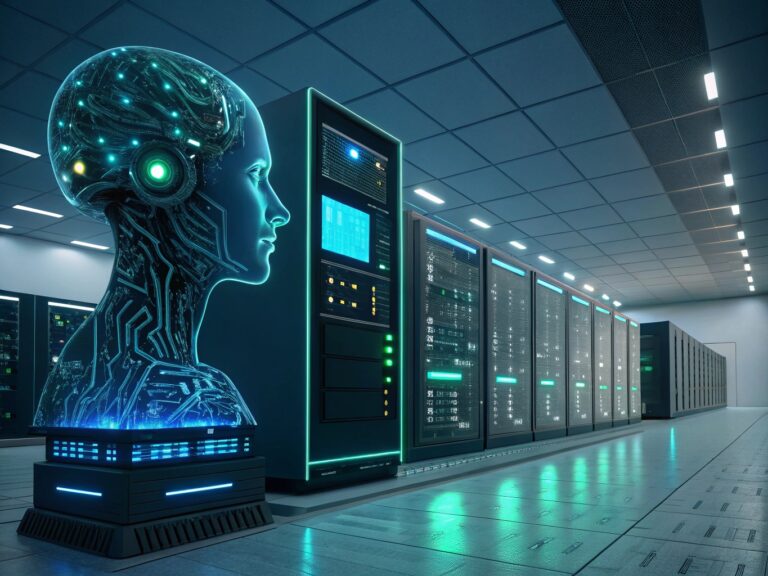Understanding the Intelligence Spectrum: From Current AI to Future AGI
The artificial intelligence landscape contains a fundamental divide that shapes our technological future. While today’s AI systems excel at targeted tasks, Artificial General Intelligence (AGI) represents an entirely different paradigm—one that remains theoretical but could revolutionize how machines think and interact with the world.
Current AI operates within carefully defined boundaries, processing information and executing tasks with remarkable precision. AGI, by contrast, would possess the cognitive flexibility to understand, learn, and reason across unlimited domains, matching or exceeding human intellectual capabilities.
The Current AI Ecosystem: Specialized Intelligence at Work
Traditional Rule-Based Systems
Today’s AI foundation rests on rule-based systems that execute predetermined algorithms. These traditional frameworks power older banking transaction systems and basic decision-making processes, operating without learning capabilities or adaptive behavior. Chess engines exemplify this approach, following logical pathways to evaluate moves within fixed operational parameters.
Machine Learning: Data-Driven Adaptation
Machine learning represents a significant evolution, enabling systems to improve through experience. Supervised learning trains on labeled datasets—spam filters learn to identify unwanted emails by analyzing correctly categorized examples. Unsupervised learning discovers hidden patterns without guidance, as seen in customer segmentation algorithms that identify market trends from raw behavioral data.
Reinforcement Learning: Trial and Error Mastery
This AI approach learns through environmental feedback, refining strategies based on success and failure. Autonomous vehicles demonstrate reinforcement learning by adapting to traffic conditions, while game-playing AI develops competitive strategies through repeated interactions.
Generative AI: Creative Content Production
Generative systems create original content—text, images, music, and videos—by learning patterns from training data. However, these systems lack genuine comprehension of their outputs, sometimes producing “hallucinations” where fabricated information appears convincingly real. Deepfake technology showcases both the potential and risks of generative capabilities.
Critical Limitations of Contemporary AI
Domain Specificity Constraints
Each AI system excels within narrow parameters but requires complete redesign for different applications. A fraud detection model cannot translate languages, and an image recognition system cannot compose music. This specialization creates silos that prevent knowledge transfer between domains.
Data Dependency Vulnerabilities
Machine learning effectiveness directly correlates with training data quality. Biased datasets produce discriminatory outcomes, as demonstrated in facial recognition systems that perform poorly across different demographic groups. Poor data quality cascades into unreliable decision-making.
Contextual Understanding Gaps
Current AI lacks genuine comprehension of meaning and context. Generative systems produce content that appears intelligent but stems from statistical pattern matching rather than understanding. This limitation becomes apparent when AI generates factually incorrect but plausible-sounding information.
AGI: The Theoretical Intelligence Revolution
Defining Artificial General Intelligence
AGI, also termed strong AI, represents a theoretical system capable of performing any intellectual task humans can accomplish. Unlike specialized AI, AGI would demonstrate cognitive flexibility across unlimited domains, learning from experience without human supervision.
Core AGI Characteristics
Autonomous Learning Capabilities
AGI systems would acquire new knowledge independently, adapting to novel situations without retraining. This self-directed learning would enable continuous improvement and skill development across diverse fields.
Contextual Reasoning and Understanding
True comprehension would distinguish AGI from current AI. These systems would grasp meaning, draw logical conclusions, and apply reasoning to unfamiliar problems. Context awareness would enable appropriate responses across varying situations.
Emotional and Social Intelligence
AGI might recognize and respond to human emotions through verbal and non-verbal cues. This emotional understanding could facilitate natural human-machine interaction and collaborative problem-solving.
Physical World Interaction
With robotic embodiments, AGI could manipulate physical objects and navigate real environments using tactile sensors and spatial reasoning. This capability would bridge digital intelligence with physical world engagement.
Timeline and Development Challenges
Leading specialists predict AGI emergence around 2030, though this remains speculative. Current technical limitations and unresolved ethical questions complicate development timelines. The journey toward AGI requires breakthroughs in machine consciousness, contextual understanding, and general reasoning capabilities.
AGI vs Current AI Technologies: Fundamental Distinctions
AGI vs Narrow AI (ANI)
Narrow AI excels at specific tasks using deep learning and neural networks. Voice assistants, recommendation engines, and image recognition represent successful narrow AI applications. These systems process information faster than humans but lack self-awareness and general intelligence.
AGI would transcend these limitations, demonstrating consciousness and reasoning abilities comparable to human cognition. While narrow AI imitates specific human capabilities, AGI would replicate human-level intelligence across all domains.
AGI vs Generative AI
Generative AI creates new content by learning patterns from specific datasets, functioning as sophisticated pattern-matching technology. These systems lack genuine understanding and generate outputs based on statistical relationships in training data.
AGI would create content through conscious creativity and genuine comprehension. Rather than pattern matching, AGI would understand context, meaning, and purpose behind creative endeavors, producing outputs through reasoning and intentional thought processes.
Beyond AGI: Artificial Superintelligence (ASI)
The Superintelligence Concept
ASI represents intelligence surpassing the most gifted human minds across all fields. While AGI aims for human-level capabilities, ASI would achieve superhuman performance in every domain, learning and self-improving at exponential rates.
ASI Capabilities and Risks
Superintelligent systems could analyze global emotional patterns and predict human responses with unprecedented accuracy. Enhanced sensory perception would enable data gathering and analysis beyond human capabilities.
However, ASI carries significant risks. Misalignment with human values could create entities with motivations beyond human control. The potential for rapid, uncontrolled advancement raises existential concerns about human agency and survival.
Self-Awareness and Consciousness
Neither current AI nor theoretical AGI demonstrates genuine self-awareness—the ability to understand one’s own existence and recognize personal actions and thoughts. While modern AI processes information faster than humans, it lacks the consciousness that defines human intelligence.
Technical Architecture: Current Limitations and Future Possibilities
Deep Learning Foundations
Contemporary narrow AI relies heavily on neural networks and deep learning architectures. These systems excel at computer vision tasks including image classification, object detection, and facial recognition. Natural language processing benefits from transformer models and recurrent neural networks, enabling machine translation and text generation.
The Consciousness Challenge
Building truly intelligent machines requires understanding human consciousness itself. Current AI lacks worldly understanding and contextual comprehension essential for human-like navigation of complex scenarios. This fundamental gap separates pattern recognition from genuine intelligence.
Implications and Future Considerations
Transformative Potential
AGI emergence would represent a watershed moment in human history, expanding machine capabilities beyond current imagination. The transition from specialized tools to general intelligence could redefine human-machine relationships and societal structures.
Ethical and Safety Considerations
Advanced AI development raises profound questions about control, alignment, and unintended consequences. Balancing innovation with ethical considerations becomes crucial as we approach more sophisticated AI capabilities.
The potential for catastrophic outcomes from misaligned superintelligence demands careful consideration of safety measures and control mechanisms. Maintaining human agency while leveraging AI capabilities presents ongoing challenges.
Conclusion: Grappling with the Intelligence Divide
The distinction between current AI and theoretical AGI can be considered an underlying transition from the machine capability towards consciousness. While today’s AI excels at specific tasks through pattern recognition and data processing, AGI would demonstrate genuine understanding, reasoning, and adaptability across unlimited domains.
Understanding these differences helps us appreciate both current AI achievements and future possibilities. As we advance toward more sophisticated systems, maintaining perspective on capabilities, limitations, and implications ensures responsible development of technologies that could reshape human civilization.
If you are interested in this topic, we suggest you check our articles:
- AI Agents Blur Business Boundaries
- What Are the New OpenAI Tools Launched to Help AI Agent Development?
- CustomGPT.ai: Genius Tool for Creating Custom AI Agents
- Agentic AI: Everything You Need to Know
Written by Alius Noreika


